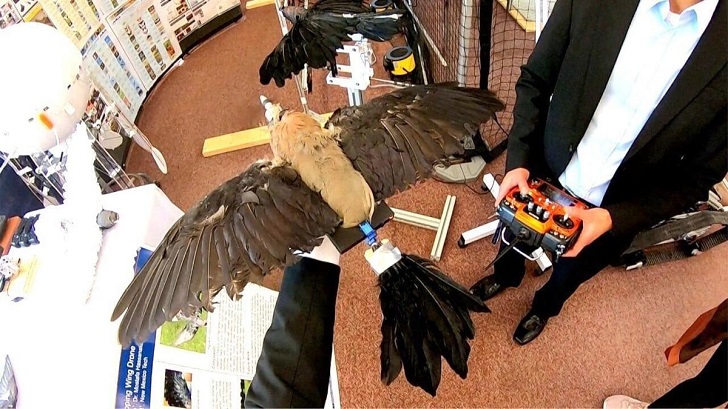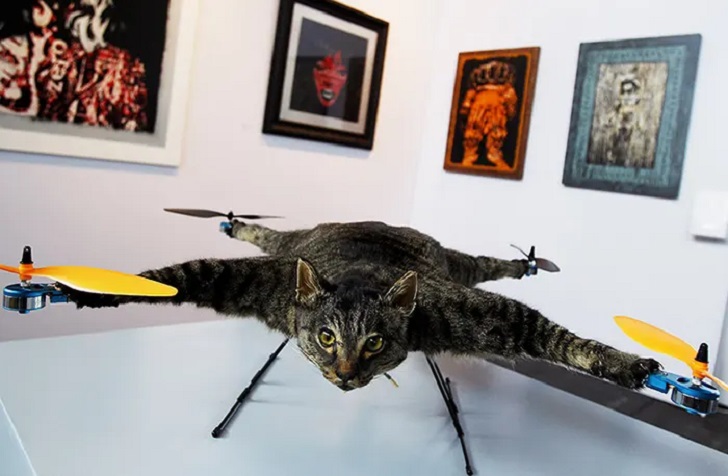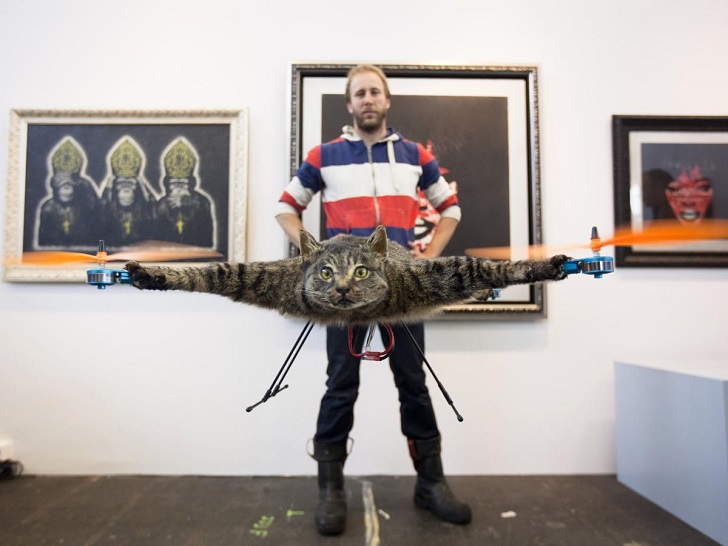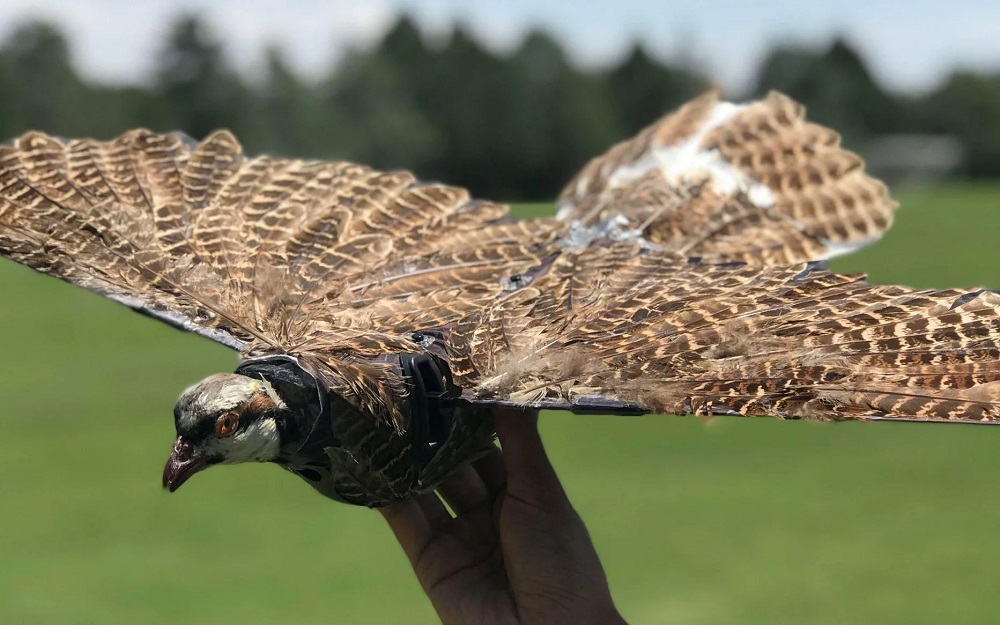Taxidermy is an ancient practice of preserving animal skins, feathers, and bones. It has been used to create dioramas and museums and to honor and memorialize pets and hunting trophies. On the other hand, drones or Unmanned Aerial Vehicles have become an increasingly popular technology for surveillance, rescue missions, and aerial photography.
However, a new trend is emerging that combines these two seemingly unrelated practices. Taxidermy birds are being turned into drones, which is not only a fascinating concept but also a controversial one.

Tuscon/ Adobe Stock | Taxidermy birds are taking flight once again, attached to flapping-wing drones
What Are Taxidermy Birds?
Taxidermy birds are preserved bird specimens stuffed with cotton or foam material. The skin is stretched over a wire frame and treated with chemicals to prevent decay and insect infestation. Previously, taxidermy birds were used for scientific research, artistic purposes, and hunting trophies. However, they have become more popular in the handicraft and home decor industry in recent years.
The Rise of Taxidermy Bird Drones
One artist at the forefront of this trend is Bart Jansen, a Dutch artist who creates unconventional and humorous art pieces using taxidermy animals and technology. In 2012, Jansen created Orvillecopter, a quadcopter made from the taxidermy body of his deceased cat, Orville. It caused a stir on social media and sparked intense debate over animal cruelty and the ethics of using animal remains in art.
Since then, Jansen has continued to combine taxidermy animals with technological components to create a series of drones, including a seagull drone that flaps its wings and a duck drone that swims in the water. While some see Jansen’s work as an innovative way to explore the boundaries of art and technology, others criticize it as a disrespectful and tasteless use of animal remains.

Ade Johnson/ AFP/ Getty Images | Orvillecopter, also known as “Helicopter Cat,” is a remote-controlled quadcopter
The Science Behind Taxidermy Bird Drones
While combining taxidermy birds with drones might seem strange, this technique has some scientific benefits. For example, a drone resembling a bird might be more effective for wildlife monitoring and conservation efforts. It could also study bird behavior and migration patterns without causing distress to live birds.
However, there are also practical challenges to creating a functional taxidermy bird drone. A skilled taxidermist must preserve the bird’s skin without damaging it. The body must also be light enough to fly and be compatible with the drone’s mechanical components. Additionally, the bird’s wings must be posed in a way that mimics the movements of a flying bird.

Cris Toala Olivares/ Reuters | The "Orvillecopter," as Jansen calls it, was subsequently exhibited at the KunstRai art festival in Amsterdam
Conclusion
The trend of taxidermy bird drones is a fascinating but controversial topic. While some people see it as a novel use of animal remains in art and science, others view it as disrespectful and unethical. The combination of taxidermy and technology raises important questions about the limits of creativity and the treatment of animals in art and science.
As technology advances and the practice becomes more prevalent, we must consider the ethical implications of taxidermy bird drones. Using animal remains in art should always be approached with empathy and respect. Nevertheless, the potential benefits of this technology highlight the innovations and discoveries that can arise when you blend traditional techniques with modern advancements.

